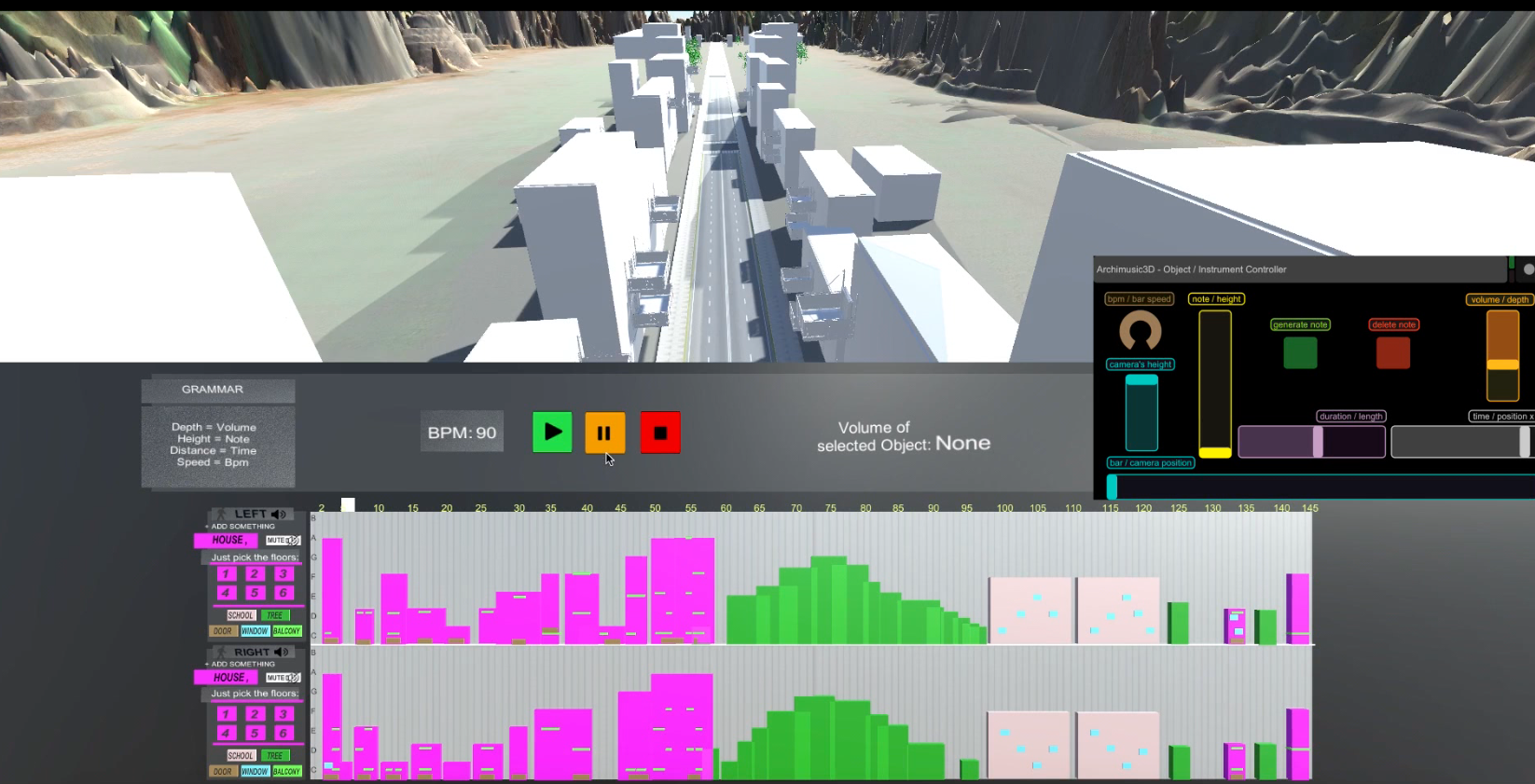

Archmusic3D
Real-Time graphical system for reciprocal transformations between music and refined urban architectural design
Fotios Giariskanis
Type
Thesis Project
Supervisor
Katerina Mania
Collaborators
Degital Media Lab, TUC
Research Domain
• Real-Time Graphics
Music
• Architectural Design
Abstract
An urban designer needs advanced analytical tools in order to understand the inner-relations and functions that describe conterporary cities. Many of the recently digitally-crafted architectural design tools for urban environments fail to address the need for a more holistic design approach that captures virtual and physical, immaterial and material including aspects of an urban design which are aesthetic as well as functional. There is a significant potential in combining the fields of composition in music and architecture through the use of information technology. Merging the two fields has the potential to release new, innovative tools for urban designers by uncovering aspects of an urban design not apparent based on the standard, vision-based digital design tools, introducing the additional modality of sound and music. This thesis describes an innovative tool developed at the Technical University of Crete, through which an urban designer can work on the music transcription of a specific urban environment applying music compositional rules and filters in order to identify discordant entities, highlight imbalanced parts and make design corrections.
This thesis presents Archimusic3D, a platform implemented in the Unity development engine that offers sonification of an Urban Virtual Environment (UVE), simulating a real-world cityscape and offering visual interpretation and interactive modification of its soundscape. The system presented in this thesis offers: First of all, the ability to view and convert an urban street to music (ready to play) based on a specific grammar of converting architectural elements to musical elements, secondly, the ability to transform this music in order to harmonize it based on musical rules and finally, the prospect of converting back the aesthetically and harmonically “corrected” musical piece to a newly refined street or urban design. The presented platform comprises of three scenes, which compile the three main parts of the system’s interface; e.g., the 3D scene, the Digital Audio Workstation (DAW) scene and the TouchOSC mobile controller. While interacting with the 3D scene, the user is able to navigate a 3D street in order to observe the 3D graphical depiction of an urban environment. The second scene is the implementation of a Digital Audio Workstation (DAW) program, in which the user is able to see the musical footprint of the street printed as a MIDI (Musical Instrument Digital Interface) file in order to listen to it and process it. Processing is conducted via a third tool representing a TouchOSC mobile controller, which is a virtual mobile console containing faders, potentiometers and buttons. When the users converts the 3D scene to a musical footprint, they submit the reciprocal transformations which may be applied to the musical part and then, they are able to navigate a newly refined street.
Based on a grammar provided by the Digital Media Lab of the School of Architecture, Technical University of Crete which connects musical with architectural elements, the result is the musical footprint of a street. The basic rules for this translation are: the height of an element is translated to the pitch of a note, the length of the element is translated to the duration of the note, and the depth of the element is translated to the volume of the note.
The piano is associated with a window, the flute with a tree, the xylophone with a balcony, the bass with a door, the cello with a building and the violin with a larger scale building. The purpose of this thesis is to develop a tool which utilizes this translation method between music and architecture for compositional experiments on urban design in order to assist designers in 1) identifying urban dissonances, 2) refining their design using musical rules and 3) presenting the output both visually and acoustically.
Giariskanis, F., Parthenios, P., & Mania, K. (2019, September). ARCHIMUSIC3D: Multimodal Playful Transformations between Music and Refined Urban Architectural Design. In 2019 11th International Conference on Virtual Worlds and Games for Serious Applications (VS-Games) (pp. 1-4). IEEE. PDF
